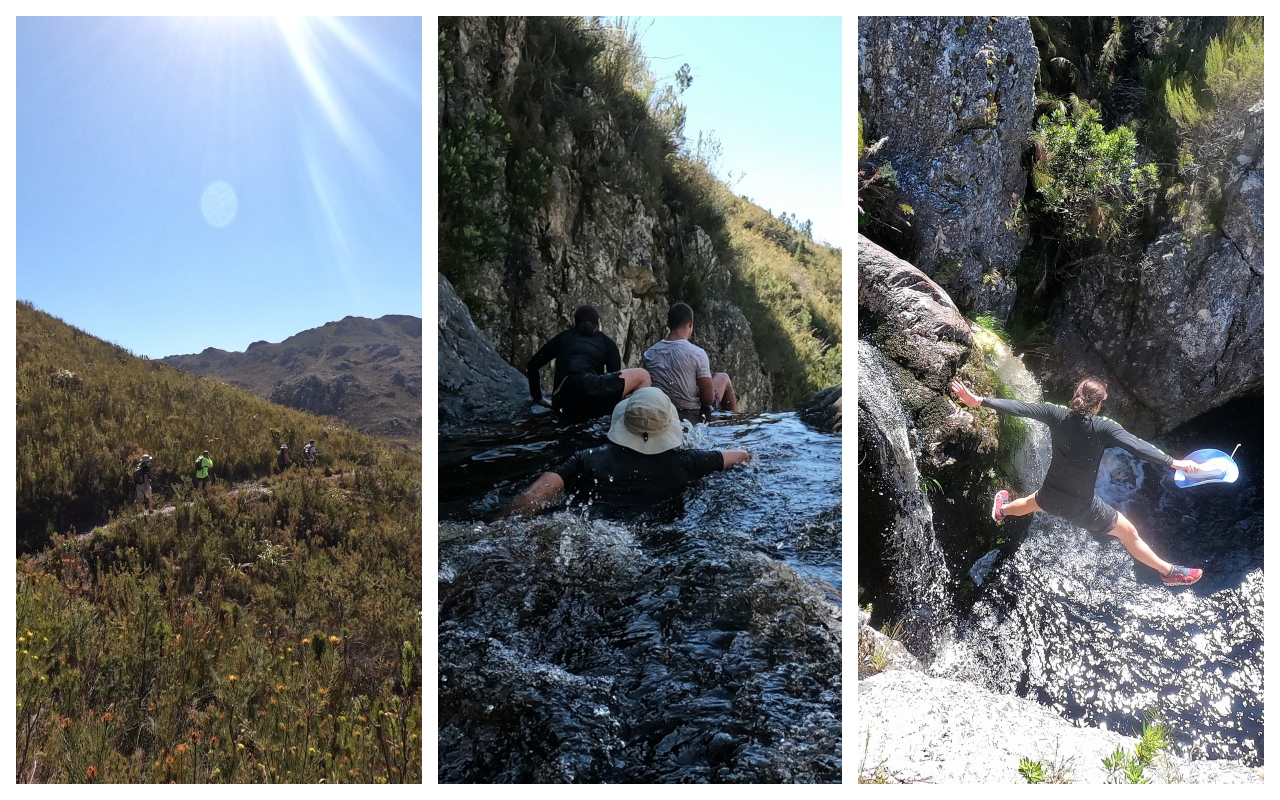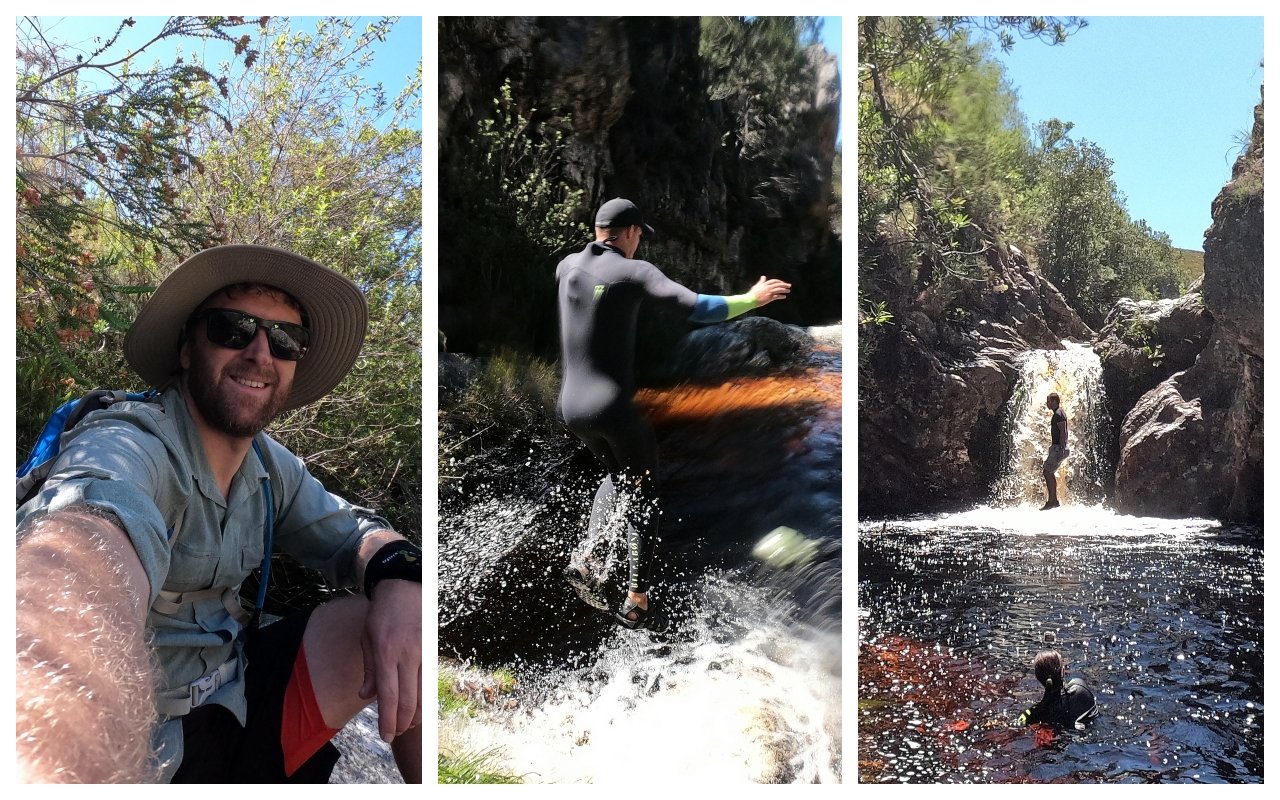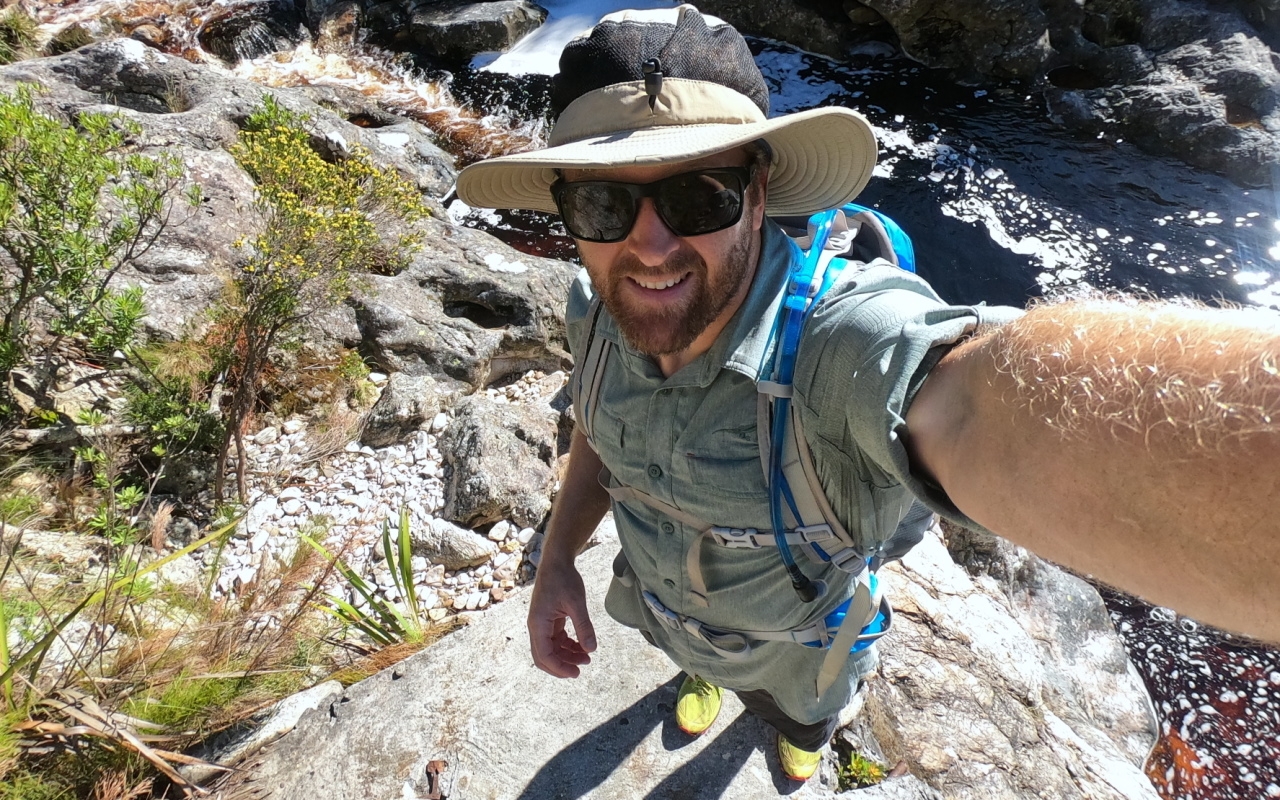What makes a successful trip, asks Seamus Allardice? Is it completing the designated route, returning home safely, having fun or leaving satisfied by the choices you made when things were beyond your comfort level? When is it okay to pull the plug on an adventure without feeling like you chickened out? In some cases, the answer is easier than others…
Over the years I’ve had quite a few potentially poorly conceived adventures in the mountains. Most of them coincided with bad weather though. In fact, the only times I’ve pulled the plug on an adventure in the last five year’s it’s been due to freezing conditions. Once, on a mountain bike ride up the Matroosberg, in a storm, I turned around when my sopping wet gloves started freezing to my seatpost as I pushed my bike. On another occasion howling wind prevented me from lighting a camp-stove, to make a warming cup of coffee, on a high mountain trail.
Having good gear, being sure-footed and knowing my own limits has by-in-large left me confident in most situations. So, a warm summer trip into the Hottentots Holland Mountains shouldn’t have been the source for any concern. But adding the dimension of height threw me completely off. Kloofing has two elements I love; hiking and swimming. The third, I’m not so comfortable with; cliff jumping.

I’ve never been comfortable with heights. It has nothing to do with the cola-coloured waters of the river. Or any concerns about what may be lurking beneath them. Rocks, logs or less rational fears don’t concern me nearly as much as the prospect of stepping up to a ledge… and forcing myself off it. The prospect of Suicide Gorge’s 14-metre biggest drop had me more nervous than I cared to admit. Yet, I thought I’d be able to will myself over the edge into the abyss.
That was not to be. I bottled it. And I’m not sure how I feel about the choice. On one hand I’m pretty sure I did the right thing. While on the other I know that I let myself down.
Invitation to Jump
When my boss, colleague and friend – Sarah Harrop – invited me to join her and a few other friends on a Suicide Gorge hike I didn’t think twice. I had an inkling of what it entailed, of course, but I tried not to dwell too much on it. Despite watching a video on the Cape Nature website, I was foolishly self-assured.
The logistics of the hike are relatively simple. Though it’s highly recommended, by Cape Nature and I’d add my voice to theirs, that you join a guide who has completed the kloof before. We had Jason Smitty guiding us and he did an excellent job scouting pools and advising on where to jump from.
Cape Nature do limit numbers and the time of year which you can undertake the hike. At the time of writing (November 2020) Suicide Gorge costs R325 per person and the route is open from 1 November to 30 April. The website has a good description of the route too and while I usually scoff at the prescribed times their estimate of it taking seven to eight hours proved accurate. Though the kloofing section is only 1.3-kilometres long it takes the best part of five hours to complete. Especially if you take your time to appreciate the breath-taking scenery.
Essential Gear
Due to the fact that you hike nearly 9-kilometres to the start of the kloofing you need to set-out in decent hiking gear. If you want to kloof in water shoes don’t make the mistake of wearing them for the hike. It’s far too long and rocky for anything but trail shoes or hiking boots. Also, given that it’s a summer adventure hats, sunscreen and sunglasses are also essential.
I packed a dry-bag with a micro-fibre towel, jacket and trail snacks into a day pack. A hydration bladder ensured I had ample liquid for what turned out to be eight hours in the mountains. Most of our group, including myself chose to kloof without a wetsuit, but I can see the appeal of packing one into your rucksack to don for the river section. Not only does a wetsuit keep you warm in the chilly mountain water but it acts as a buffer between you and the rocks. Having worn a wetsuit for a kloof down the Kaaimansrivier, near Wilderness, I can attest to the fact that it makes you feel more secure somehow too. Like you’re wearing a neoprene suit of armour.
Keeping it light I wore trail shoes, my trusty Nueva shirt, a pair of X-Trail 5-Inch running shorts and a Dundee wide-brimmed hat. An additional tip I’d suggest is to take your sunglasses off as soon as you get to the river. Don’t think you can do the first slide with them on. You’ll lose them, like I did. Unless you have a sunglass strap securing them, for when they get swept off your face.

3, 2, 1…
The hiking trail to Suicide Gorge is well signposted, apart from where the trail crosses the Sonderend River. Don’t be fooled by reaching the river. Suicide Gorge proper has a clear sign indicating the start of the kloofing section. The Sonderend River crossing is a little ambiguous, but it comes just 6.5-kilometres into the hike so you should know from that fact alone that you should be pressing on.
When we reached Suicide Gorge, we made our way upstream to start the kloof with an extra water-slide. It’s a great introduction to what you’re in for. Not too scary, even for me, and easily repeatable. In fact, we all did it twice it was so much fun.
From there we wound our way downriver, taking on the increasingly intimidating jumps. I wish I could tell you how many there are, but my mind was simply not focused on the moment. That 14-metre compulsory jump at the end had me entirely disconcerted.
I was so concerned about what lay ahead that I found myself stumbling far more often than usual. At times I felt down-right unsafe, such was the unstableness of my footing. While the rest of the group shivered from the cooling effects of the water and a gentle breeze, I’m sure I was shaking because of my nerves.
As the jumps got bigger my anxiety levels rose. Initially I clambered down rocky outcrops, reducing the height I had to jump. I realised, even at the time, that in doing so I was robbing myself of the chance for gradual acclimatisation. Perhaps throwing myself off the highest possible point at the first opportunity would have been a better tactic.
I didn’t do that however. I just kept trailing along, always the last to jump. Taking longer and longer to force my legs to leap each time. Eventually we reached the point of no return. Looking down the gorge I could see the cliffs closed in around the pools below. My last chance to exit stage left (actually right, if I’m being accurate) was a scramble up a 45-degree slope. It was that or take an 8-metre plunge.
Followed by a 9-meter jump. And then that dreaded 14-meter one…
Standing on the cliff I watched everyone jump. Then turned and clambered up the slope, having made an arrangement to meet Sarah and Co. where the path joined the jeep track back to the car. It wasn’t what most people would consider a safe decision. Separating from the group, climbing a mountain without a footpath and lacking the safety-net of a cell phone, isn’t a move I’d recommend.
That said once I started climbing, I was immediately happy with my choice. There was simply no way I could have seen myself safely jumping off those final three cliffs. My legs weren’t following instructions. The reptile brain, deep within my medulla oblongata, was in full survival mode. No amount of rationalising would overcome the primal fear which had taken hold. Not even shame could make me jump.
Everyone else managed just fine. Stepping off took no skill. No fitness. Just the bloody-mindedness to overcome the subconscious belief that to do so would result in death with the logic that it would be totally fine…
Processing Failure
Writing this, three days later, I’m not upset by my choice. I feel certain that it wasn’t really a choice. But that doesn’t mean I’m not disappointed. Overcoming that won’t be a quick fix however. There’s no going back next week with the intention of completing Suicide Gorge at the second time of asking.
I’ll have to condition myself before the next attempt. Train for heights as one would for anything that requires a skill or fitness.
How this helps anyone else, I don’t know. But it has felt good to admit the fear. And confess the failure. Maybe not every adventure written up for publication needs to be a tale of success. Perhaps someone will take heart from my cowardice.
Meanwhile, I am left with the knowledge that admitting I chickened out was easier than jumping. Which leaves me with a mountain to climb before I can even contemplate stepping off it and plunging 14-metres into a dark mountain pool.

If you too have a fear of heights, here's some advice on how to conquer it
Laura Catalan Hassid – Sport Scientist:
“Gradual exposure is definitely a good way of preparing your brain for the jump! Checking out the landing area by diving down to check the depth and looking for rocks helps your rational brain to be reassured! A great help could be using deep breathing techniques when you’re at the top getting ready to jump! You can try inhaling through the nose for 10” followed by a 5” apnea and then exhaling through the mouth for 10”... you can increase the apnea phase if you can as this phase helps the most! When you breath in place your hand on your abdomen to help your nervous system know that your breathing with your tummy and then filling your lungs. You can also try tapping your vagal nerve (just behind your ear) as this will help your parasympathetic system and thus help your heart rate variability to be optimised and your stress hormones to be beneficial rather than detrimental!”
Jeff Ayliffe – Human Powered Flight, paragliding instructor:
“Fear of heights can be looked at like a muscle. It needs to be trained and strengthened, and once developed, it can weaken if not worked. It was always interesting for me to see many of my skydiving colleagues get terrified when I took them rock climbing on big, exposed walls, but once they had spent some time climbing, the fear of heights started to ebb. I can also notice that if I haven't climbed for a long time, I'm a little more wary and tentative on the rock face. But after a short time, I get comfortable again. Short answer- the more time you spend jumping off higher ledges, the more you fear of heights will start to ease.”
